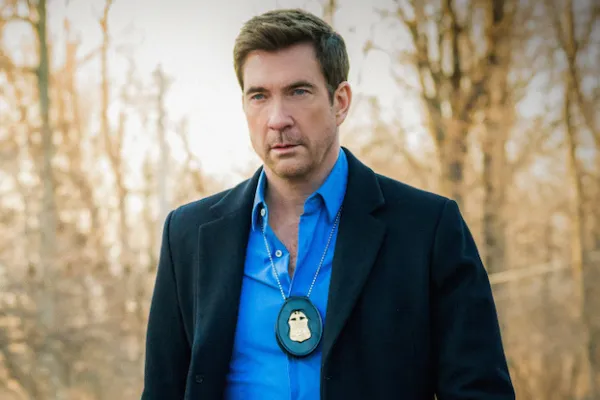Unveiling the Intriguing World of the FBI’s 10 Most Wanted List

In the realm of law enforcement and criminal investigation, few entities command as much respect and fascination as the Federal Bureau of Investigation (FBI). Established in 1908, the FBI has been at the forefront of solving complex crimes, protecting national security, and maintaining law and order. One of the agency’s most iconic tools in apprehending dangerous criminals is the “FBI’s 10 Most Wanted Fugitives” list. This list, first introduced in 1950, has become synonymous with high-profile criminals and intense manhunts. In this article, we delve into the history, significance, and some notable cases surrounding the FBI’s 10 Most Wanted list.
The Genesis of the List:
The origins of the FBI’s 10 Most Wanted list can be traced back to a conversation between a reporter and the then FBI Director, J. Edgar Hoover, in 1949. Hoover, recognizing the power of the media in reaching the public, conceived the idea of a publicized list featuring the most dangerous and elusive criminals. The first list, officially released on March 14, 1950, included individuals wanted for various crimes such as murder, kidnapping, and robbery.
The Purpose and Impact:
The primary purpose of the 10 Most Wanted list is to generate public awareness and assistance in capturing fugitives. By enlisting the help of the public and the media, the FBI aims to turn the nation into a vast network of vigilant eyes, aiding law enforcement in locating and apprehending these dangerous individuals. The list serves as a powerful tool to keep the public informed about ongoing criminal investigations and emphasizes the FBI’s commitment to justice.
Over the years, the impact of the list has been significant. Many fugitives have been captured directly or indirectly due to tips from citizens who saw their profiles in the media. The FBI’s 10 Most Wanted list has become an integral part of the agency’s public outreach strategy, fostering collaboration between law enforcement and the community.
The Selection Process:
The criteria for inclusion in the FBI’s 10 Most Wanted list are stringent. Individuals considered for the list are usually involved in serious crimes, pose a significant threat to public safety, and have demonstrated a capacity for eluding law enforcement. The selection process involves collaboration between the FBI, local law enforcement agencies, and the United States Attorney’s Offices.
Notable Cases:
- Osama Bin Laden (2011): While not a traditional inclusion in the list, the successful operation resulting in the death of Osama Bin Laden showcased the FBI’s commitment to bringing high-profile criminals to justice. Bin Laden was the mastermind behind the 9/11 attacks, and his elimination was a watershed moment in the fight against global terrorism.
- James “Whitey” Bulger (2011): A notorious organized crime figure, Bulger spent 16 years on the run before being captured. His life and criminal activities were the inspiration for the film “Black Mass,” starring Johnny Depp. Bulger’s capture highlighted the long reach and persistence of the FBI.
- Andrew Cunanan (1997): Known for a cross-country killing spree that included the murder of fashion designer Gianni Versace, Cunanan became infamous as one of the most wanted criminals of the 1990s. He was on the FBI’s list for a short period before being located and taking his own life.
- Eric Robert Rudolph (1998): Rudolph, known as the Olympic Park Bomber, was responsible for a series of bombings, including the Centennial Olympic Park bombing during the 1996 Summer Olympics in Atlanta. His capture in 2003 showcased the FBI’s determination to bring domestic terrorists to justice.
The Digital Age and Evolving Tactics:
In recent years, the FBI has adapted its strategies for publicizing the 10 Most Wanted list to leverage the power of the internet and social media. The FBI’s official website features an interactive and constantly updated list with detailed profiles, photographs, and videos of the fugitives. Social media platforms, including Facebook and Twitter, are utilized to rapidly disseminate information to a wider audience.
Moreover, advancements in technology have allowed the FBI to employ cutting-edge techniques in tracking and apprehending fugitives. The integration of forensic analysis, data mining, and artificial intelligence has enhanced the efficiency of investigations, making it increasingly challenging for fugitives to remain in hiding.
Challenges and Criticisms:
While the FBI’s 10 Most Wanted list has been successful in capturing numerous criminals, it is not without its criticisms. Some argue that the list may perpetuate racial profiling or disproportionately focus on certain types of crimes. Others point to cases where individuals were later found innocent, raising concerns about the potential for wrongful inclusion in the list.
Additionally, the attention and publicity associated with being on the list may motivate some fugitives to commit more violent acts or go to greater lengths to avoid capture. Striking a balance between public awareness and responsible law enforcement practices remains a challenge for the FBI.
Conclusion:
The FBI’s 10 Most Wanted list stands as a testament to the agency’s dedication to justice and the safety of the public. Over the decades, it has evolved from a simple print publication to a dynamic, digital tool that harnesses the collective power of society. While it has faced criticisms and challenges, the list remains an iconic symbol of the ongoing battle between law enforcement and those who choose to defy the law.
As technology continues to advance, the FBI’s methods for tracking and apprehending fugitives will undoubtedly evolve. The 10 Most Wanted list will remain a key instrument in the FBI’s arsenal, reminding the nation that, even in the face of adversity, the pursuit of justice remains unwavering.
-
What is the FBI’s 10 Most Wanted List?
- The FBI’s 10 Most Wanted List is a roster of individuals wanted by the Federal Bureau of Investigation for serious crimes. It was first introduced in 1950 as a public outreach strategy to generate awareness and assistance from the public in capturing dangerous fugitives.
-
How are individuals selected for the list?
- Individuals considered for the list are typically involved in serious crimes, pose a significant threat to public safety, and have demonstrated the ability to evade law enforcement. The selection process involves collaboration between the FBI, local law enforcement agencies, and the United States Attorney’s Offices.
-
How often is the list updated?
- The list is constantly updated as new fugitives emerge, or existing ones are apprehended. With advancements in technology, updates can occur rapidly, and the FBI employs digital platforms such as its official website and social media to disseminate information quickly.
-
What crimes lead to inclusion in the list?
- Crimes that lead to inclusion in the list vary but often involve serious offenses such as murder, kidnapping, terrorism, and other violent crimes. The severity of the crime and the potential danger posed by the fugitive influence their inclusion in the list.
-
How successful has the FBI’s 10 Most Wanted List been in capturing fugitives?
- The list has been highly successful, with many fugitives captured directly or indirectly due to tips from the public. The collaboration between law enforcement and the community, fueled by the list’s publicity, has led to the apprehension of numerous dangerous criminals.
-
Can anyone nominate a person for the list, or is it only law enforcement’s prerogative?
- While law enforcement agencies play a crucial role in the selection process, tips from the public are instrumental. Anyone with information about a fugitive can contact the FBI through their website, a local FBI office, or by calling the toll-free tip line.
-
How has the list evolved over the years?
- The list has evolved from a print publication to a dynamic digital tool. The FBI utilizes its official website and social media platforms to provide detailed profiles, photographs, and videos of the fugitives. This evolution reflects the changing landscape of communication and technology.
-
Have there been cases where individuals were wrongly included on the list?
- While the FBI takes great care in the selection process, there have been cases where individuals were later found innocent or where mistakes were made. The FBI acknowledges the potential for errors and strives to balance public awareness with responsible law enforcement practices.
-
Does being on the FBI’s 10 Most Wanted List make a fugitive more dangerous?
- There is a concern that the attention and publicity associated with being on the list may motivate some fugitives to become more dangerous or go to greater lengths to avoid capture. Balancing the impact of publicity with the need for public awareness is an ongoing challenge for the FBI.
-
How can the public stay informed about the FBI’s 10 Most Wanted List?
- The public can stay informed by regularly checking the FBI’s official website, which features an interactive and frequently updated list. Additionally, the FBI actively utilizes social media platforms like Facebook and Twitter to share information about the most wanted fugitives. If individuals have information, they are encouraged to contact the FBI through the provided channels.






